The underwater world harbors remarkable intelligence that often goes unnoticed by terrestrial observers. While fish have traditionally been underestimated in the intelligence department—sometimes unfairly labeled as having “three-second memories”—modern science reveals a different reality. Many fish species demonstrate complex problem-solving abilities, use tools, recognize human faces, and exhibit social learning that rivals some mammals. This article explores the 13 smartest fish species and their astonishing behaviors that challenge our understanding of aquatic intelligence.
13. Manta Rays The Gentle Giants with Self-Awareness

Manta rays possess some of the largest brain-to-body ratios among fish, and researchers have observed behaviors suggesting remarkable intelligence. In a groundbreaking study, manta rays demonstrated self-recognition in mirror tests—a hallmark of advanced cognition previously only confirmed in certain mammals and birds. When presented with mirrors, mantas performed repetitive movements while observing their reflections, suggesting they recognize themselves as individuals.
These magnificent creatures also display incredible social complexity. Mantas form friendships that can last years, recognize specific individuals, and engage in cooperative feeding behaviors where they coordinate movements to maximize plankton capture. Their brain structure includes enlarged areas associated with learning, problem-solving, and complex social interactions. Scientists have even documented mantas seeking out human divers for help removing parasites or fishing hooks stuck in their bodies—suggesting both problem-solving abilities and trust in specific humans they recognize.
12. Cichlids The Family-Oriented Strategists
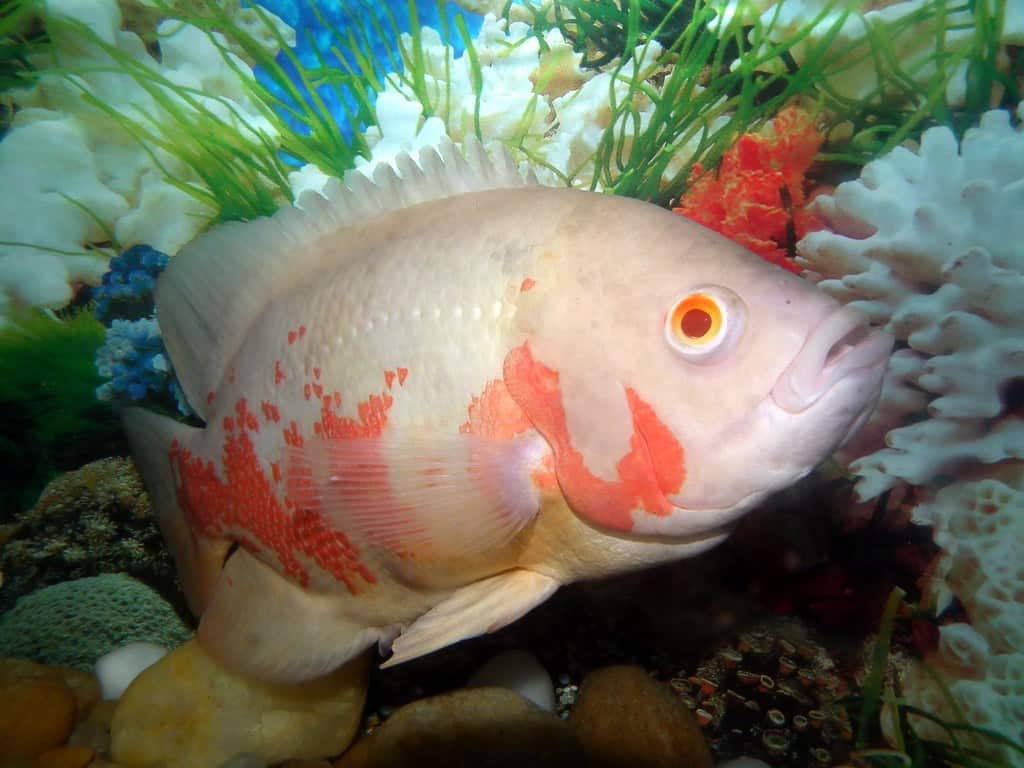
Cichlids represent one of the most diverse fish families with over 1,700 species, and many demonstrate remarkable intelligence. These fish are known for their sophisticated parental care behaviors, with some species going to extraordinary lengths to protect their young. Parent cichlids can recognize their own offspring from among thousands of similar fry through chemical signals, demonstrating advanced recognition capabilities.
What truly sets cichlids apart is their complex social structures and problem-solving abilities. Studies have shown that cichlids can learn to distinguish between human faces, recognize specific individuals who feed them, and even develop hunting strategies requiring coordination between multiple fish. In laboratory tests, cichlids have demonstrated the ability to navigate mazes, remember solutions to problems for months, and learn by observing the successes and failures of other fish. Their territorial behaviors include sophisticated bluffing tactics and resource management that suggest complex cognitive processing.
11. Wrasses The Tool-Using Innovators

Wrasses, particularly the orange-dotted tuskfish and the green wrasse, have astounded researchers with their tool use—a behavior once thought exclusive to mammals and birds. These remarkable fish have been documented picking up rocks and using them as anvils to crack open shellfish. The fish will carry shells to specific rocks they’ve identified as effective tools, position the shell precisely, and then strike it against the rock with calculated force until it breaks open.
Beyond tool use, wrasses display exceptional adaptability and learning capabilities. The cleaner wrasse, which removes parasites from larger fish at “cleaning stations,” has developed complex cooperative relationships with predatory clients. They remember individual clients, provide better service to those who visit frequently, and can even recognize when they’re being observed by potential new clients—adjusting their behavior to appear more cooperative. Remarkably, cleaner wrasses have passed the mirror test, suggesting self-awareness previously thought beyond fish cognitive abilities.
10. Archerfish The Precision Hunters

Archerfish have evolved one of the most sophisticated hunting techniques in the animal kingdom, displaying remarkable calculation abilities and hand-eye coordination (or rather, eye-mouth coordination). These fish shoot down insects above the water surface by spitting precisely aimed jets of water. What makes this truly impressive is the physics involved—archerfish must account for light refraction at the water-air interface and adjust their aim accordingly, essentially solving complex optical physics problems instinctively.
Scientists have discovered that archerfish can learn to hit moving targets, adjust the force of their water jets based on the size and distance of prey, and even account for the anticipated movement of insects. In laboratory settings, archerfish have demonstrated the ability to distinguish between human faces and recognize specific patterns with a high degree of accuracy. They can learn these skills not only through trial and error but also by observing other archerfish—a form of social learning that indicates advanced cognitive processing. Young archerfish develop their shooting skills through practice, showing progressive improvement that suggests complex motor learning.
9. Groupers The Collaborative Hunters
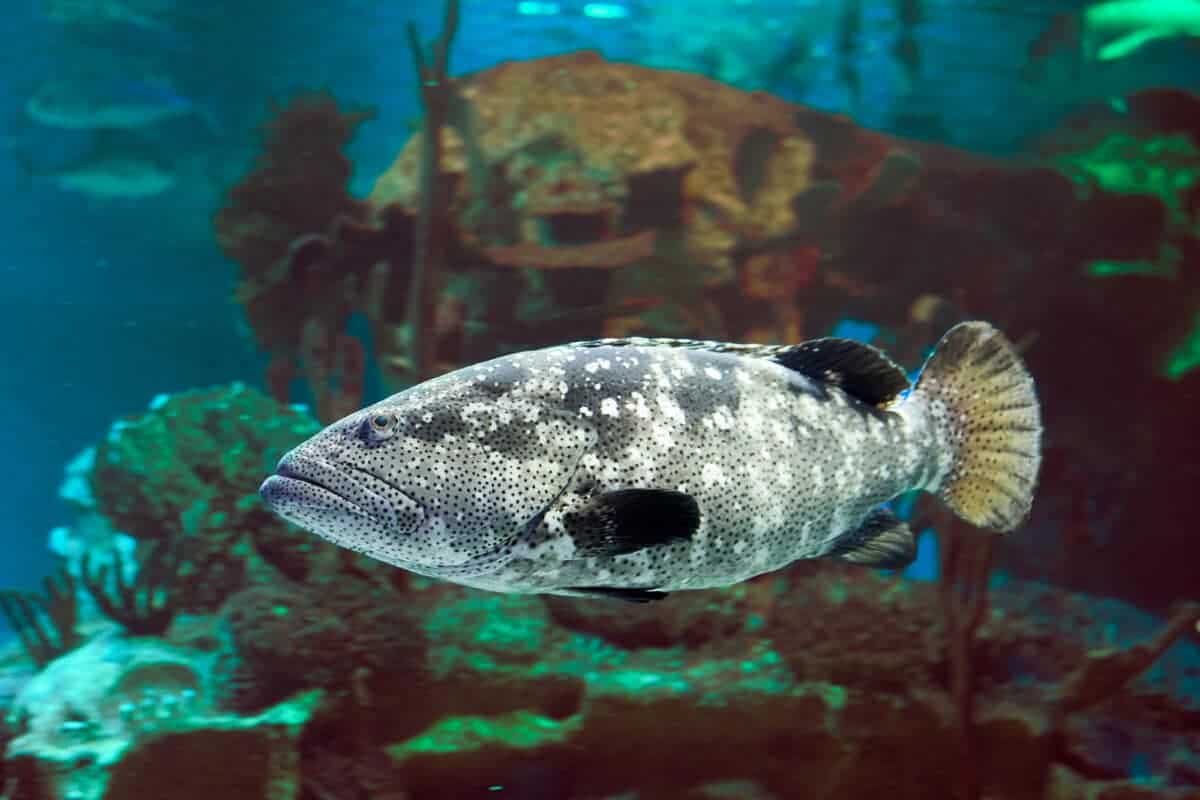
Groupers display intelligence through remarkable collaborative hunting behaviors that involve interspecies cooperation. The roving coral grouper, for example, has been documented using a sophisticated form of referential communication with moray eels. When prey escapes into reef crevices inaccessible to the grouper, it will signal to nearby eels through specific head movements and shakes. This intentional recruitment of hunting partners demonstrates not only communication skills but an understanding of other species’ capabilities—a form of cognitive empathy.
These collaborative hunting partnerships aren’t random events but established relationships. Researchers have observed consistent pairings between specific groupers and eels, suggesting long-term cooperative relationships. Groupers also display remarkable spatial memory, remembering complex reef territories and optimal hunting locations. They can quickly learn which human divers feed them and adjust their behavior accordingly, even recognizing individual humans and approaching them specifically for food. Some groupers have demonstrated the ability to use their body to indicate the location of hidden prey to human divers, showing yet another form of cross-species communication.
8. Stingrays The Problem-Solving Tacticians

Stingrays possess cognitive abilities that rival many vertebrates, demonstrating impressive problem-solving skills in both natural and experimental settings. In aquariums, freshwater stingrays have been observed using water jets to dislodge food from puzzle boxes, manipulating objects with their pectoral fins, and remembering complex sequences to access food rewards. These behaviors indicate not just intelligence but creativity in approaching novel problems.
Their sensory capabilities enhance their cognitive processes in fascinating ways. Stingrays can detect minute electrical signals from hidden prey (electroreception) and combine this with touch and visual information to create detailed mental maps of their environment. Researchers have found that stingrays can learn to navigate mazes by remembering spatial cues, recognize individual humans who feed them, and even distinguish between different patterns and colors in discrimination tests. Like their relatives the manta rays, some stingray species show evidence of self-recognition and demonstrate social learning by observing and copying the successful techniques of other stingrays.
7. Triggerfish The Tactical Planners
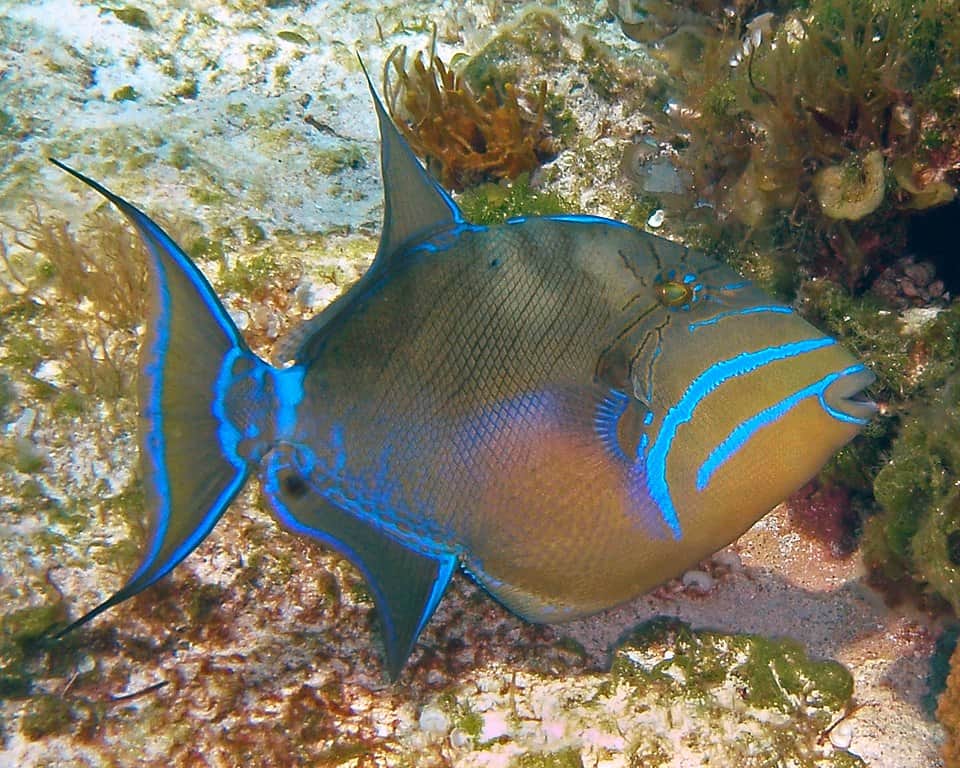
Triggerfish stand out for their exceptional problem-solving abilities and tactical approach to obtaining food. These fish have been observed using multiple techniques to access prey, including blowing jets of water to overturn sea urchins, using their fins to flip over shells, and even using coral as tools to crush sea urchins. What’s particularly impressive is their ability to assess a situation and select the most appropriate technique based on the specific challenge—demonstrating both flexibility and planning.
In laboratory settings, triggerfish have quickly learned to open complex mechanisms to access food rewards, often developing innovative approaches that researchers hadn’t anticipated. They display excellent spatial memory, remembering productive feeding grounds and returning to them with remarkable precision. Their intelligence extends to social learning as well; triggerfish have been observed watching and imitating successful feeding techniques from other fish. Some species create elaborate nests for breeding by clearing debris and arranging coral pieces—architectural behaviors that require planning and spatial awareness that would be impressive even in mammals.
6. Pufferfish The Artists of the Sea
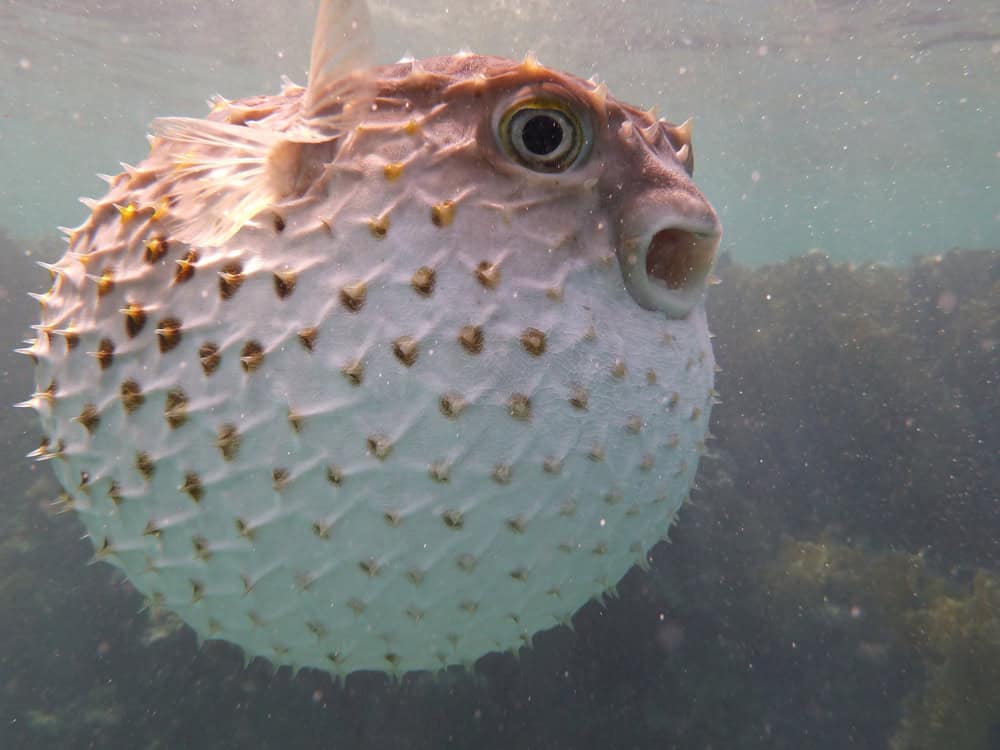
The Japanese pufferfish (Torquigener sp.) creates one of the most spectacular displays of animal architecture known to science—intricate geometric patterns on the seafloor that serve as both mating displays and nests. Male pufferfish spend days creating these circular structures, measuring up to 7 feet in diameter, by using their bodies to carve precise ridges and valleys in the sand. They decorate these designs with carefully selected shells and stones, creating contrast and visual appeal. This behavior demonstrates exceptional spatial awareness, planning capabilities, and aesthetic sensibility previously thought impossible in fish.
Beyond their artistic abilities, pufferfish demonstrate remarkable problem-solving skills. They quickly learn to recognize caretakers in aquarium settings, distinguish between different feeding tools, and can be trained to perform specific behaviors for rewards. Studies have shown they remember the solutions to maze problems for months and can apply learned techniques to new situations. Their ability to precisely inflate their bodies when threatened also requires sophisticated neurological control and body awareness. Some pufferfish species have even been observed using water jets to uncover buried shellfish and working together to flip over larger prey—cooperative behaviors that suggest social intelligence.
5. Elephantnose Fish The Electrical Geniuses

The elephantnose fish (Gnathonemus petersii) possesses one of the largest brain-to-body weight ratios of any animal—their brain constitutes 3% of their body weight (for comparison, the human brain is about 2%). This extraordinary neural processing power supports their remarkable electroreception system, which they use to create detailed “electrical images” of their environment. These fish generate weak electrical fields and then analyze distortions in these fields to navigate, find food, communicate, and recognize other individuals—essentially “seeing” with electricity in their dark, murky habitats.
Research has demonstrated their exceptional cognitive abilities through discrimination tasks, where elephantnose fish learn to distinguish between objects of different shapes, sizes, and materials based solely on electrical properties. They can remember complex spatial arrangements for months and quickly adapt to changes in their environment. In laboratory settings, these fish have shown the ability to learn abstract concepts, recognize patterns, and solve problems that would challenge many mammals. Their electric communication system is also sophisticated, with fish able to recognize individual “electrical signatures” of other elephantnose fish and modify their own electrical output to avoid jamming signals from others—suggesting advanced social awareness and communication skills.
4. Damselfish The Territory Defenders

Damselfish display remarkable intelligence through their complex territorial behaviors and social interactions. These small reef fish actively cultivate “algae farms” on specific coral territories, removing unwanted algae species while encouraging the growth of preferred varieties. They aggressively defend these territories not just from other damselfish but selectively against specific species that pose the greatest threat to their algae gardens—demonstrating an ability to categorize different fish species and assess varying levels of threat.
Their cognitive abilities extend to remarkable memory and recognition skills. Damselfish can recognize neighboring territory holders versus strangers, maintaining stable “neighbor relationships” that reduce unnecessary conflict. Research has shown they can remember the faces of human divers who have harassed them for up to two weeks. In laboratory settings, damselfish quickly learn to associate specific sounds or visual signals with food rewards and retain this learning for extended periods. They also demonstrate social learning, with juvenile fish observing adults to learn territory maintenance techniques, predator recognition, and foraging strategies—a form of cultural transmission previously thought limited to more complex vertebrates.
3. Dolphinfish (Mahi-Mahi) The Ocean Sprinters
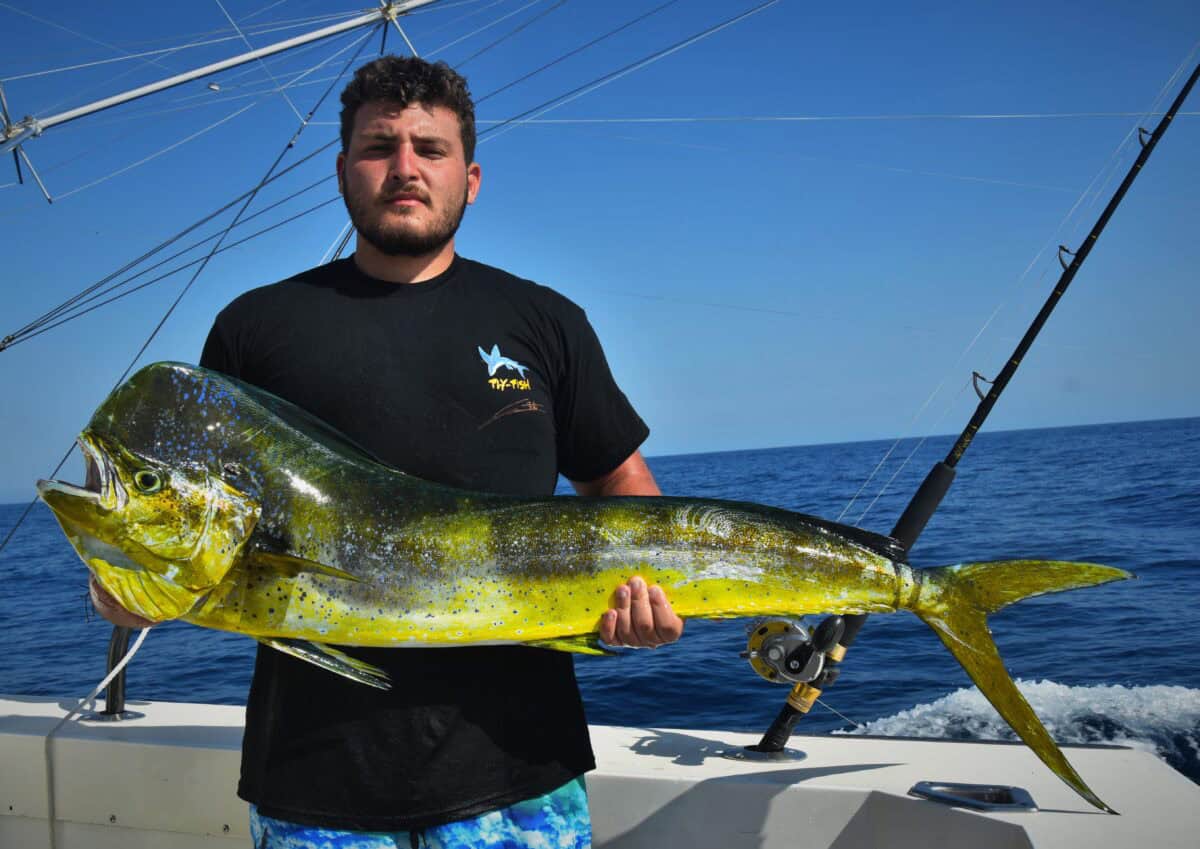
Dolphinfish, commonly known as mahi-mahi, combine extraordinary physical capabilities with impressive cognitive skills. These fast-growing pelagic predators demonstrate exceptional learning abilities, particularly in hunting contexts. They use complex cooperative strategies when pursuing prey, with groups coordinating to herd smaller fish into concentrated balls for easier feeding. Researchers have observed dolphinfish communicating through body positioning and movements to maintain these formations—a behavior requiring social coordination and awareness of other individuals’ intentions.
Their problem-solving abilities are particularly evident in captivity, where dolphinfish quickly learn the feeding routines of caretakers and can be trained to respond to specific signals. They demonstrate excellent spatial memory, returning to productive feeding locations across vast ocean distances. Dolphinfish also show remarkable adaptability, adjusting their hunting techniques based on prey behavior and environmental conditions. While not as extensively studied as some reef-dwelling species, their rapid learning capabilities, social coordination during hunting, and navigational skills indicate cognitive processes more sophisticated than typically attributed to pelagic fish.
2. Bettas The Fighting Fish with Individual Recognition

Betta fish (Betta splendens), despite their small size, demonstrate surprising cognitive abilities that challenge our understanding of fish intelligence. Research has shown that bettas can recognize individual human faces, distinguishing between familiar caretakers and strangers. They quickly learn associations between specific stimuli and food rewards, with studies demonstrating their ability to learn tasks like swimming through hoops or following targets for rewards. Some betta owners have successfully trained their fish to perform multiple tricks on command, indicating impressive learning capabilities.
Their social intelligence is particularly noteworthy. Male bettas, known for their aggressive territorial behavior, can remember the outcomes of previous encounters with specific rivals. After establishing dominance hierarchies, they adjust their behavior based on whether they’re confronting a fish they’ve previously defeated or one that has defeated them—demonstrating both recognition memory and strategic decision-making. Bettas also show evidence of emotional responses, displaying distinct behavior patterns in response to environmental enrichment versus environmental stressors. Their complex nest-building behavior, where males carefully construct bubble nests of specific designs for breeding, demonstrates planning and spatial awareness surprising for a fish of their size.
1. Goldfish Defying the “Three-Second Memory” Myth

Perhaps no fish has been more unfairly maligned in terms of intelligence than the common goldfish. The myth of their “three-second memory” has been thoroughly debunked by scientific research, which shows goldfish possess memory spans that can last months or even years. Studies have demonstrated that goldfish can learn to respond to specific acoustic cues, with some trained to recognize different musical compositions and respond accordingly. They can be taught to push levers for food rewards and retain this learning for extended periods without reinforcement.
Goldfish also demonstrate remarkable social learning capabilities. They observe the behavior of other fish to locate food sources, avoid predators, and navigate obstacles. In experimental settings, goldfish have shown the ability to estimate time intervals, anticipating regular feeding times with increased activity shortly before food is typically provided—even maintaining this pattern on days when feeding is skipped. Their spatial memory allows them to create mental maps of their environment, remembering the location of obstacles, hiding places, and feeding stations. Far from the forgetful creatures of popular myth, goldfish possess cognitive capabilities that include categorical learning, time perception, social recognition, and long-term memory retention.
Conclusion: Understanding Fish Intelligence Challenging Our Perceptions

The remarkable behaviors exhibited by these 13 fish species fundamentally challenge our traditional understanding of aquatic intelligence. Research continues to reveal that fish cognition exists in forms we’re only beginning to comprehend, with neural architectures that have evolved along different evolutionary pathways than mammals yet achieve similar cognitive outcomes. Fish intelligence manifests in species-specific ways that reflect ecological niches—from the tool use of wrasses to the mathematical precision of archerfish and the artistic endeavors of pufferfish.
These discoveries have significant implications for fish welfare and conservation. Recognizing fish as sentient, intelligent beings capable of suffering, problem-solving, and forming social bonds demands reconsideration of current practices in fisheries, aquaculture, and the pet trade. As we continue to explore the cognitive abilities of fish, we’re likely to discover even more examples of sophisticated behavior that blur the traditional boundaries between “higher” and “lower” animals. The intelligence of fish reminds us that cognition in the animal kingdom is not a linear hierarchy but a diverse spectrum of remarkable adaptations to different environmental challenges.
- 13 Smartest Fish (and Their Surprising Behavior) - August 11, 2025
- 10 Unbelievable Animal Migrations You Can Witness in the US - August 11, 2025
- How the Bald Eagle Bounced Back from Near Extinction in the US - August 11, 2025

